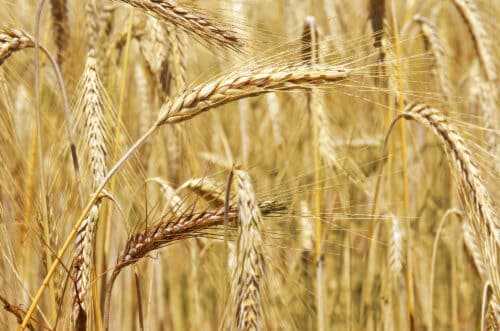Wild wheat, "the mother of wheat", is one of the first plants that man domesticated about ten thousand years ago. Over the years, as a result of accelerated cultivation to improve crops, many essential traits that are retained in the wild species have been displaced from modern wheat. Among the repressed traits, there are anatomical and physiological characteristics of the root system that have a dramatic effect on the water balance of the entire plant

Wheat is one of the main agricultural food crops and contributes about a fifth of the global calorie consumption. In Israel, wheat is the main crop of the agricultural sector and every year about a million dunams are sown. The combination of climate change and an increase in extreme events along with a lack of rain in winter is a limiting factor for food production and endangers nutritional security. In a new study conducted by Prof. Zvi Peleg from the Institute of Plant Sciences and Dr. Nimrod Schwartz from the Department of Soil Sciences in the Faculty of Agriculture, Food and Nutrition at the Hebrew University, the researchers were able to restore to modern wheat essential properties that were lost in the process of wheat domestication thousands of years ago, thus making it more resistant to the changing climate and conditions Extreme dryness. The study was published in the journal Plant, Cell and Environment.
Wild wheat, "the mother of wheat", is one of the first plants that man domesticated about ten thousand years ago. Over the years, as a result of accelerated cultivation to improve crops, many essential traits that are retained in the wild species have been displaced from modern wheat. Among the repressed traits, there are anatomical and physiological characteristics of the root system that have a dramatic effect on the water balance of the entire plant and its ability to cope with changing climate conditions. Because the roots are below the surface of the soil, it is difficult to characterize them and so far not many attempts have been made to improve the root system in agricultural crops. In this study, the hybridization between the wild wheat and the cultured wheat was carried out, with the aim of trying to restore essential properties that were "lost" during the processes of civilization and modern cultivation. Prof. Peleg: "The goal of our research was to improve the genetic-physiological understanding of the hydraulic properties of the root system, so that it would be possible to cultivate plants with a better ability to cope with climate changes expected in our region, and especially water shortage conditions."
As part of the research, carried out together with doctoral students Harel Bacher, Elisha Handel and Adi Oxenberg, a large-scale characterization of the root system combined with genetic sequencing was conducted, which resulted in the identification of genomic sites that contribute to anatomical and physiological properties in the roots of wild wheat. Insertion of these sites into modern wheat varieties resulted in a change in the axial conduction of the roots, which means an improvement in the efficiency of water transfer through the roots. "In Israel's Mediterranean climate, the grain filling phase usually occurs in the period after the rainfall when the availability of water in the soil decreases," explains Dr. Schwartz. "Saving water consumption throughout the growing season can be used as an important adaptive feature for a plant to deal with drought conditions. Indeed, in a field test we performed with the new line that contained a genetic segment of the wild wheat for low axial flow, we demonstrated water saving that resulted in a significant improvement in the crop under drought conditions."
"Our research proves the great potential inherent in wild wheat for reshaping the roots of wheat," adds Prof. Peleg and continues, "the results can enable the cultivation of wheat varieties adapted to the changing climate conditions and ensure the continued production of kernels and food security for the rapidly growing world population."
More of the topic in Hayadan:
